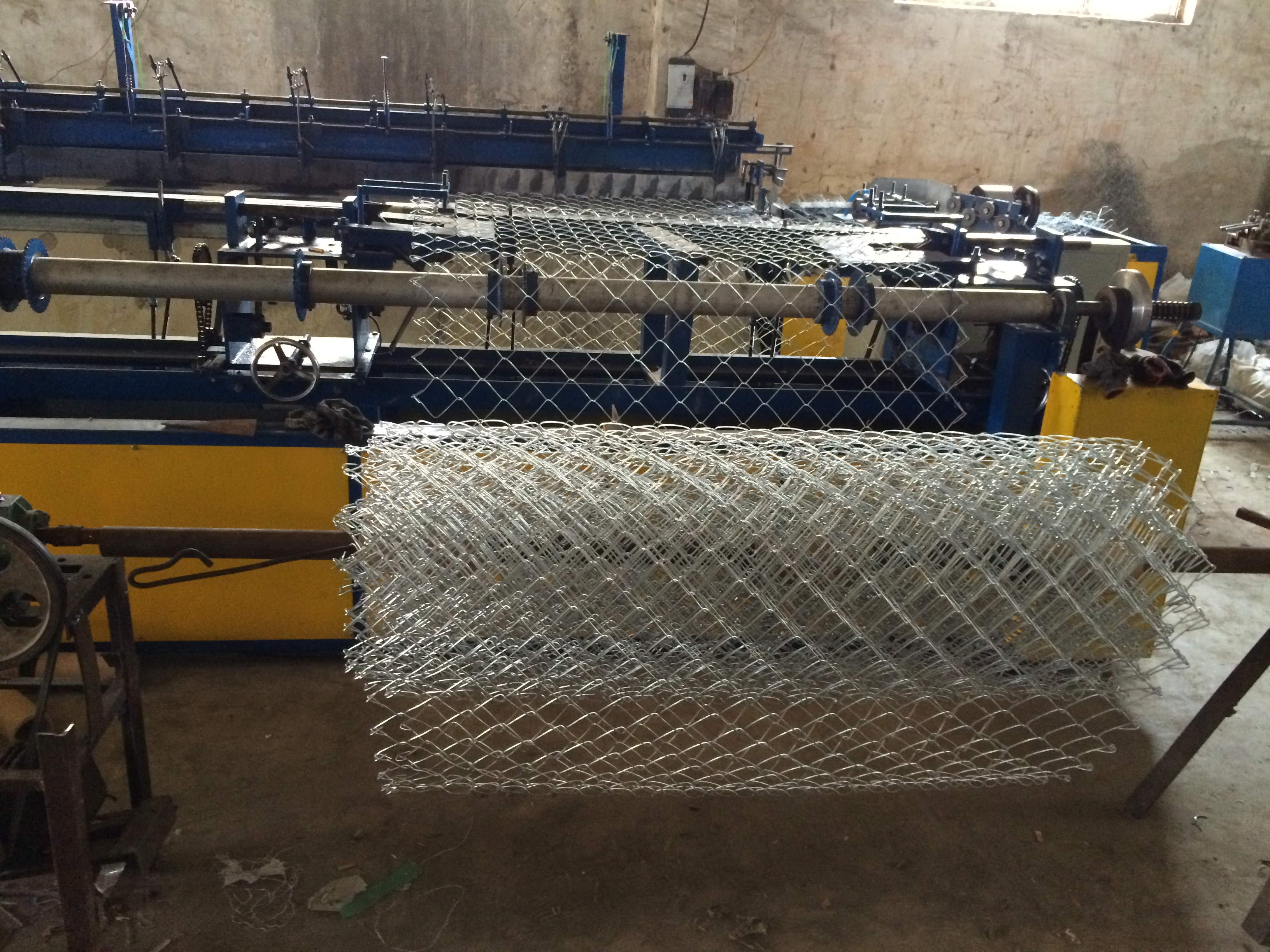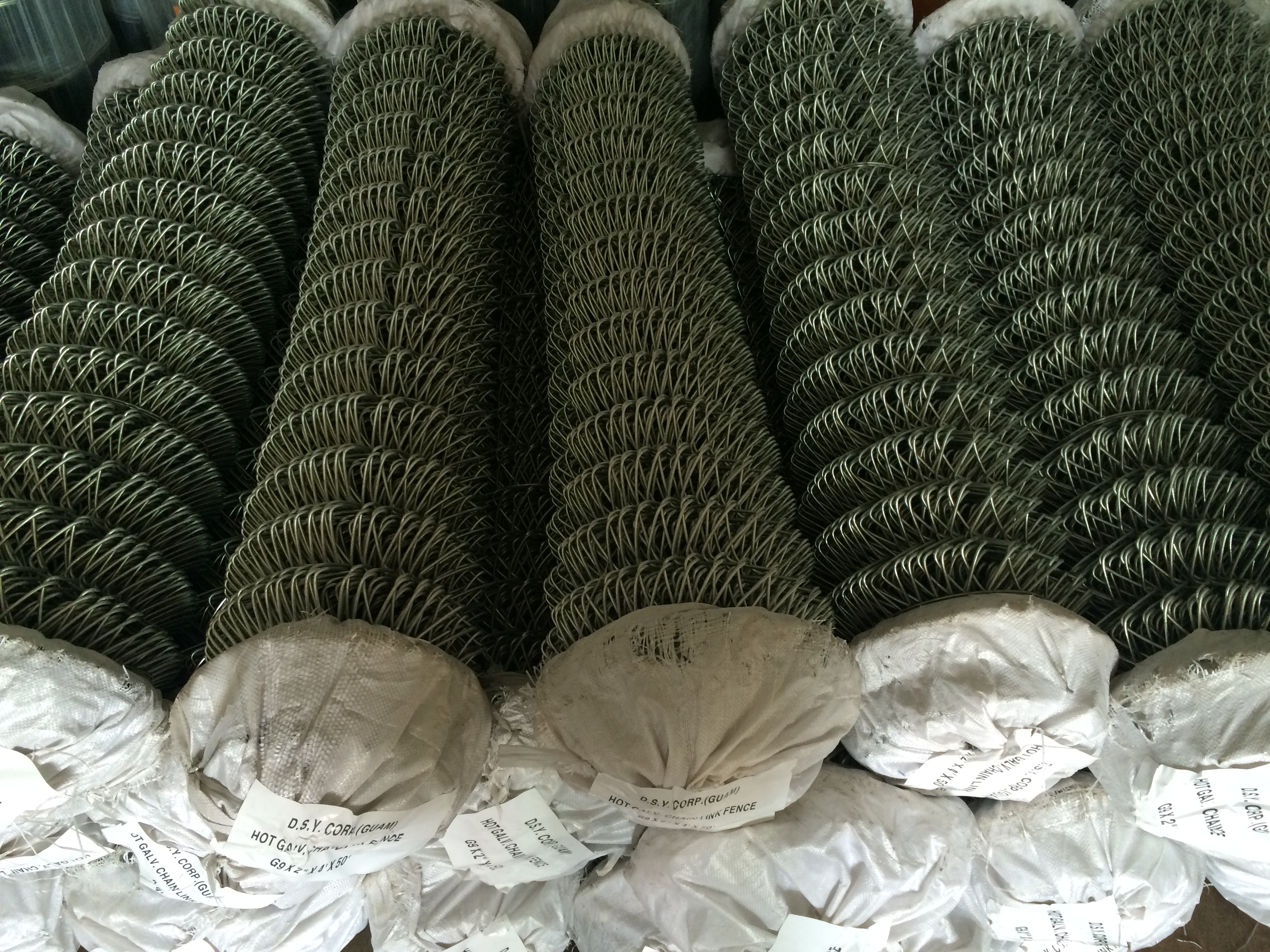TYL wire mesh provide chain link wire mesh fence.
It is also known as diamond fence. Chain Link Fence has the
features of woven simple, beauty and practical. The finish treatment is
galvanized. Chain link fence are widely used as protective fence
in residential sites, roads and sports fields. It is normally erected along a fence line of tubular steel
posts. It is widely used in super highway, airport, garden, etc.We also have hexagonal
wire netting, weld wire mesh, 3D fence panel, galvanized iron wire,
garden wire, and Garden Gate for your choice.
We know that the paper-plastic coating will be the combined result of thermal compression and physical effects. Temperature, pressure, and speed are the three basic factors for achieving this comprehensive physical effect. Correctly handling the relationship between these three is the key to the technology of process operations.
Temperature: The first key to the film. The adhesive used for the precoat is a hot melt adhesive. The temperature determines the melt state of the hot melt adhesive, determines the leveling performance of the hot melt adhesive, and determines the molecular orientation of the hot melt adhesive. The diffusion ability of three kinds of substances, such as BOPP film, printing ink layer, and paper substrate, also determines the crystallinity of the hot melt adhesive. Only by correctly controlling the temperature of the working area, can the solid heat of the pre-coating film on the film be achieved. The melted layer is completely melted into a viscous state, with proper fluidity to achieve wet adhesion to the surface of the printed matter, and at the same time, it is guaranteed to be cured immediately after compounding, so that the laminated film product has a smooth appearance, sufficient light, and a good degree of melting of the adhesive layer. No creases. And can peel off the ink. The temperature control of the lamination process also influences and determines the change in the thermal resistance of the laminating film when it is heated, as well as its resistance to new thermal forces. Therefore, strict control of temperature is the primary key to precoat film coating. According to our practice. Temperature control is appropriate in the range of 80 to 100°C.
Pressure: Appropriate pressure should be used while properly controlling the lamination temperature, because the surface of the paper itself is not very smooth. Only under the effect of pressure, the sticky-flowing hot-melt adhesive will drive away the air on the surface of the printed material. Wet the surface of paper prints. Generates colloidal molecules to the ink layer of paper prints, diffusion between paper molecules, misalignment, and good bonding to form a complete coverage of the entire surface of the print, so that the prints reach a bright, non-foggy, flat, crease-free adhesive layer , Adhesive effect is good, in the absence of wrinkles, the appropriate increase in pressure, in order to make full performance of the hot-melt adhesive thermoplastic curing machine, to ensure that the film products in the composite plus after the process, for a variety of Physical peeling, impact force and other effects have strong resistance capabilities such as indentation, bronzing, etc., in order to achieve a unified uniform speed of the internal structure and surface state of the composite print: the paper surface coating is a compound movement in the dynamic progress. The speed of the movement determines the time for the paper-plastic composite to stay on the hot-pressing work interface of the thermal-compression bond, as well as the temperature and pressure input by the laminating machine, as well as the cooperation between the paper and the plastic during the actual production process. Actual value, when the film temperature and pressure are fixed.
The change of speed will cause the film coating effect to change accordingly, and due to the upper limit of temperature and pressure supply, it will only change from the direction less than the set value, and with the speed increase, the drop will be obvious, and the hot pressing force will decline. Deteriorating the compounding effect. The speed is too fast, the bond is not firm, there is a fog, too slow it is inefficient, and even foaming.
Therefore, the composite running speed determines the time for the pre-coating film and the paper print to be bonded. According to our experience, the general speed is controlled at a speed of about 10 to 20 sheets per minute, which is more suitable for the electronic laminating machine. Since the hot-pressing drum is smaller, the speed should be slower.
The actual values ​​of the three factors of temperature, pressure, and speed have a certain range. Due to the different equipment, this requires us to find the best value in practice in order to ensure the composite effect of the pre-coated film and to create favorable conditions for the next step of the spine cover to remain free from blisters.
The combination of pre-coated films, how to create favorable conditions for the next process, including indentation, bronzing, and adhesive binding on the front cover, is also one of the important factors that we should consider when using the pre-coating film for laminating operations.
When the precoat film is combined with the paper print, the lower limit is 80°C and the upper limit is 100°C. Intuitively, after the composite body is separated from the hot platen roller, it has high brightness, no fogging, good flatness, and no blistering as a benchmark. In such a temperature range, the hot melt adhesive can fully absorb heat from the outside to the inside. The effect of modification after blending various raw materials in the gel can be fully exerted. The entire adhesive layer is completely melted, resulting in a true, firm bond, rather than a superficial, shallow layer, which cannot be bent or bent. Reheat the shell and blisters.
When the lower limit temperature is slightly down, the brightness of the composite product will decrease. When the upper limit temperature rises slightly, the phenomenon that the non-smooth and different shapes of the bubble electronic laminating machine are burned out on the film surface is particularly obvious. Just to grasp the critical working area of ​​the coating temperature. Not only the composite effect is good, but also the hot-melt colloid is close to the cross-linking reaction hotspot, and the colloidal solidification is hardened, so that when it is heated again, it will not be easily softened. The correct temperature control method for the laminating operation is to grasp this finely. The coating temperature is very close to the crosslinking reaction temperature.
Recently, we have used pre-coated films for post-gluing, binding, and binding, and found that most of the books that have undergone recoiling after splitting have been subjected to bookbinding, blistering, and blistering. The phenomenon of clear water cooling after the film leaves the heat source and the instant automatic separation do not result in this phenomenon. Some devices are equipped with a water cooling system and an automatic segmentation system and a winding system for optional use. The curing time of the hot melt adhesive for a film is about 10 to 15 s, and the time required for natural cooling in the production environment at room temperature is greater than this standard time, especially if the semi-finished product is stacked and wound before being divided, it is difficult to accumulate temperature between each other. Dispersion, so that the natural cooling solidification, usually slow cooling and solidification, will make hot melt gradually crystals. The generation of crystals increases the sensitivity of the colloids to the temperature, may cause the softening of the hot melts again, and weakens the heat resistance of the high-temperature laminating operation to approximate the cross-linking reaction. Therefore, we use water-cooling and real-time automatic Dividing to prevent heat from accumulating, creating a low-temperature quenching zone immediately after the film product is detached from the heat source. Let it cool down quickly, so that the viscosity of the hot melt adhesive in the molten state increases rapidly, the links are too late to move, and the crystals are difficult to form. This allows the coated products to heat up again without obvious melting and softening. Gluing ensures that the spine will not leave the shell and foam when it is reheated. In order to ensure good binding conditions for the perfect binding, the quality of binding and laminating products is more assured.


Mesh Size
Wire Diameter
Length / Roll
0.5 - 100m
Width / Roll
0.5 - 3.0m
Edge Finish
Knuckle - Knuckle; Knuckle - Twist
Zinc Coating
60-300/m2 for hot dipped galvanized;
8-12g/m2 for electro galvanized
Materials and specifications can be made as per
customer's requirement.
Material: Hot dipped galvanized wire or electro galvanized wire.
Packing: Make each end plastic bag or woven bag.
Usage: widely used in super highway, airport, sport yard, garden.
The top and bottom of this fence can be formed by a knuckle or twist edge (see illustrations Type A and Type B).
Hot Dipped Galvanized Chain Link Fence, Galvanized Chain Link Fence Roll,Diamond Stainless Steel Mesh,Chain-Link Fabric
DINGZHOU TIAN YILONG METAL PRODUCTS CO., LTD. , https://www.wiremeshsolution.com